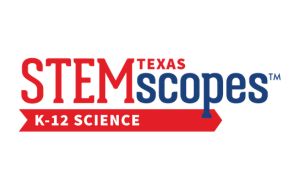STAT Conference Safety Regulations and Practices for Demonstrations, Experiments and WorkshopsThe Science Teachers Association of Texas (STAT) sets forth the following minimum safety practices and regulations for all hands-on demonstrations, experiments, and workshops given at STAT-sponsored events in meeting rooms, other on-site or off-site locations, and on the floor of an exhibit hall. Additionally, if specific conference venue rules and regulations are more restrictive, venue policies will supersede STAT regulations and must be adhered to without question. Note: The STAT Conference Safety Regulations and Practices document has been adapted from the National Science Teaching Association (NSTA) guidelines. The following materials and practices are prohibited at STAT events:
STAT Expectations Require that all Presenters Adhere to the Following Professional Practices for All Hands-On Demonstrations, Experiments and Workshops:DO emphasize and demonstrate appropriate safety precautions throughout the presentation or workshop. DO comply with all local fire and safety rules and regulations. DO wear appropriate personal protective equipment (i.e., eye protection, apron, ear protection, and similar protective gear) for all chemical demonstrations or when appropriate for other demonstrations. DO provide personal protective equipment such as eye protection, aprons, and safety equipment for participants who will be handling chemicals or hazardous substances or working with flames. Appropriate personal protective equipment must also be provided for audience members who are considered in the “danger zone” that would result from a splash or other means of contact. DO use a safety barrier when physical, biological, and chemical hazards exist. For example, provide a machine guard when motor-driven discs are revolved at moderate or high speeds and move participants to a safer distance from the rotating disc. DO provide appropriate non-latex gloves and shields when working with hazardous chemicals and biohazards, cryogenic materials, hot materials, vacuums, and when presenting animals for observation. DO recruit assistants for demonstrations and provide them with proper instructions beforehand. DO ask participants and audience members to cover their ears when a loud controlled explosion is anticipated, and alert them at the beginning of the program about the presence or production of allergenic materials, such as chemical emissions, strobe lights, microwaves, “theater” smoke, lycopodium powder, or live animals. DO follow proper procedures for working with pressurized gases and when heating all forms of matter. DO provide service dogs that are present with similar personal protective equipment, appropriate to their size and proximity to the ground. Lasers and similar electromagnetic radiation sources should not be directed downward toward a service dog. DO confer with owners of service animals to make them aware of what will take place during a demonstration so that the animal can be protected, and both the presenter and participant will know what to expect from the animal. DO NOT direct lasers into eyes of an observer or from a reflected surface into the eye. DO NOT taste or encourage participants to taste any non-food substances. DO NOT dump or dispose of any hazardous liquid, solid, organic, or recyclable waste in building facilities that contain programming for conferences and meetings (restrooms, sinks, toilets, water fountains, etc.). STAT Provides the Following Professional Practices to Help You Prepare for Your Hands-on Demonstration, Experiment or Workshop:DO practice all procedures prior to presenting them to an audience or having participants try them. DO make arrangements to have a fire extinguisher available whenever the slightest possibility of fire exists. Safety codes require training for use of portable fire extinguishers. Certificate of extinguisher training should be provided as part of the safety compliance approval. DO prepare handouts for demonstrations that give participants detailed instructions about the procedures, safety precautions, hazards, and disposal methods. Safety Data Sheets for chemicals and biohazards should be made available upon request at all times at the site. DO ensure that prudent safety practices are shown in all photographs, slides, and videotapes. Do not remove goggles and other personal protective equipment for aesthetic considerations. DO limit quantities of hazardous materials to the quantity required for the demonstration or experiment, and only those quantities that can be adequately handled by the available ventilation system. DO inspect glassware and equipment to ensure it is not broken or damaged. If glassware is to be heated, PyrexTM or similar product should be used. Properly dispose of broken glassware. DO thoroughly check motor-driven discs that will be revolved at moderate or high speeds. Make sure the disc is sturdy, that it contains no parts that may come free, and that the safety nut is securely fastened. DO ensure that any lasers used are helium-neon lasers with a maximum output power rating not exceeding 1.0 milliwatts. DO label all hazardous chemicals used in presentations and activities in accordance with OSHA’s newly revised (March 2012) Hazard Communication Standard 29 CFR 1910.1200 relative to the Globally Harmonized System of Classification and Labeling of Chemicals (GHS). DO have an appropriate storage container for waste and make proper arrangements in advance to dispose of any hazardous liquid, solid, organic, or recyclable waste to ensure it is disposed of offsite. DO NOT plan activities that allow direct viewing of the Sun or of infrared or ultraviolet sources. |


